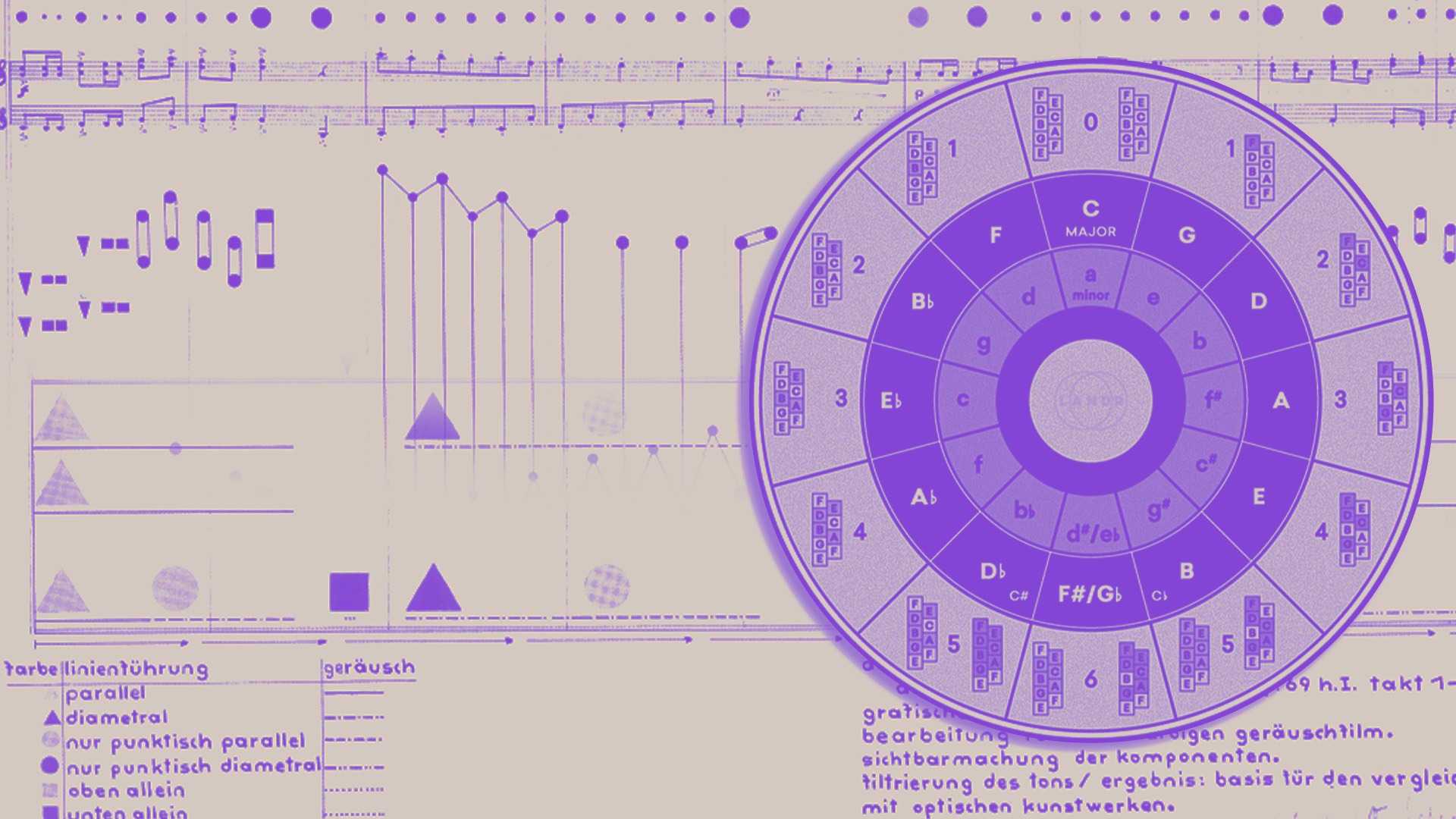
12 Essential Drum Rudiments Every Drummer Needs to Know

Drumming is harder than it looks. Anyone who’s picked up a pair of sticks knows it takes time to learn rhythm and stick control. That’s why drum rudiments are a critical stepping stone.
Rudiments are great because they give drum apprentices a language and starting point for learning how sticking patterns work.
Whether you’re looking to learn how to write a killer drum fill, need ideas to incorporate in a solo or are looking to expand your repertoire of grooves drum rudiments are a go-to.
Practice them and you’ll have an excellent starting point for learning more complex rhythms and you’ll know how to incorporate them into your music.
What are drum rudiments?
Drum rudiments are a set of rhythmic patterns that drummers learn to grasp various sticking patterns. Nearly every beat a drummer can play can be described with a specific rudiment.
Drum rudiments have been in existence since ancient militaries used snare drummers to communicate important information across battle lines.
On the battlefield, a military snare drummer would play various patterns of rudiments to tell commanders where enemies were advancing from—essentially turning the drummer into an ancient walkie-talkie.
Guess who the army would target first.
Grouping the rudiments
Today, rudiments have evolved far beyond their militaristic uses, even though they remain an important language that drummers use to formulate rhythmic phrases and inform their playing.
There are 40 drum rudiments defined by the Percussive Arts Society, and while there are other rudiments aside from these semi-official rudiments—most are variations and expansions of a handful of basic essentials.
As a rule, all rudiments can be broken down into 4 groups:
- Rolls
- Paradiddles
- Flams
- Drags
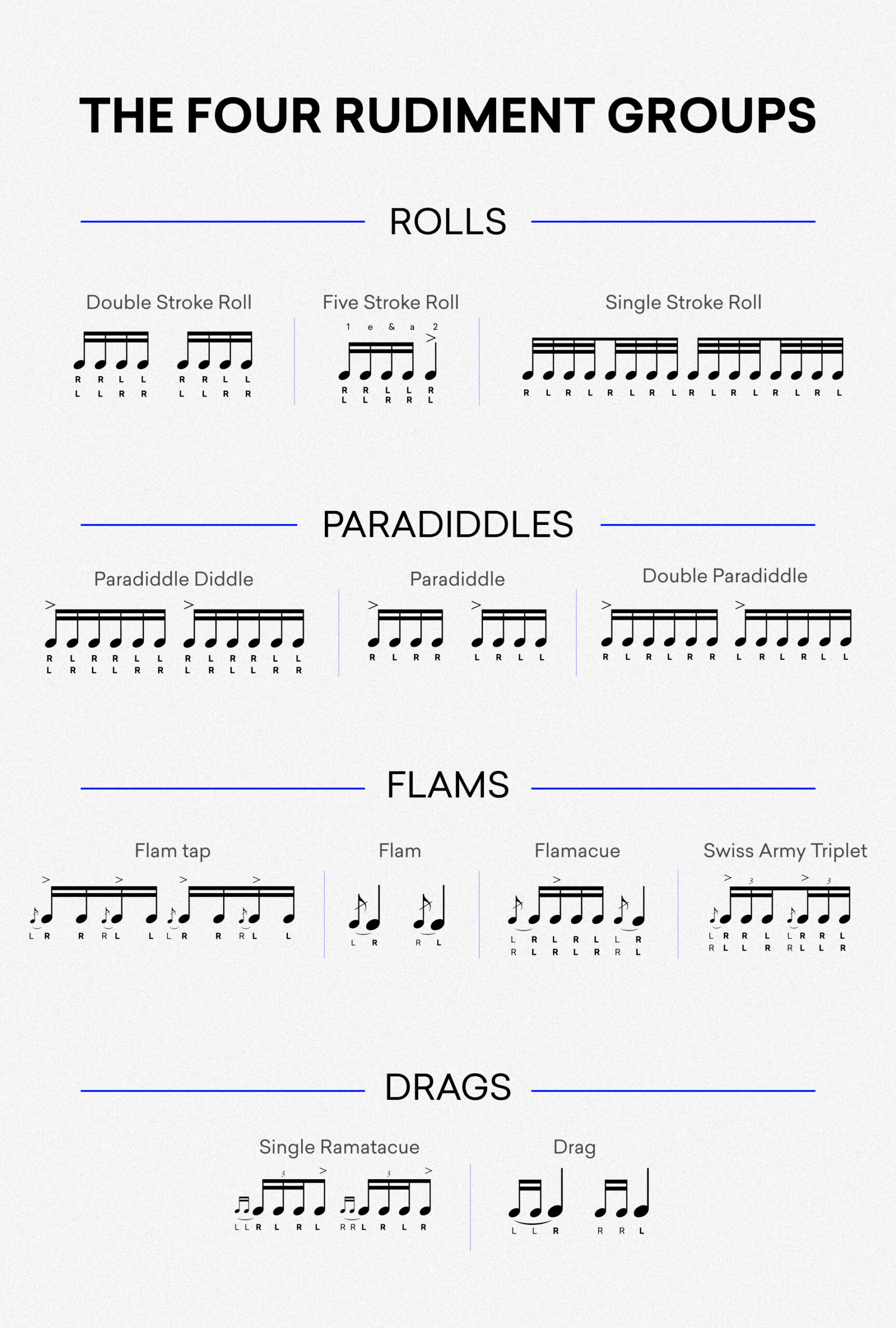
Mastering these four basic rudiments will unlock your way toward more interesting rudiments that can be applied across the drum kit.
The 12 essential drum rudiments to learn first
While having all 40 of the official rudiments under your belt is useful, you don’t need to learn them all right away.
At a certain point, rudiments become more suited to marching and orchestral percussion uses.
These 12 essential rudiments are well suited to modern drum-kit playing and will offer you a ton of options for experimentation around the kit.
And, if you want to learn all 40 rudiments, these ones are an excellent place to start.
1. The paradiddle

The paradiddle is easily the most popular rudiment. Learning your paradiddles should be a day one exercise—and they’re something that you’ll learn and use around the drumset for the rest of your drumming career.
The nice thing about the paradiddle is that it alternates between starts on the left and right hand, making it flow verily easily.
Learning your paradiddles will help you start grasping the hand movements needed to play more challenging rudiments like the double stroke roll, the swiss army triplet and others.
How to use it around the kit:
2. The single-stroke roll

Here’s a super simple, but incredibly important rudiment to start practicing right now.
The single-stroke roll is a controlled pattern of alternating strokes between each hand.
A single-stroke roll can go for an undefined amount of time—it serves more as a concept for practicing speed and control on the drums.
Of course, the key to success with this rudiment is control. To play this rudiment properly you need to play each stroke evenly in terms of time and volume.
Practice it to a metronome, increasing in speed. Practice it loud, practice it quiet—play increasing or decreasing in speed. Most of all, focus on control.
How to use it around the kit:
3. The double-stroke roll

The double-stroke roll is where the rubber hits the road in terms of value and difficulty.
Getting your doubles clean, controlled and fast can take a lifetime—but having a good double-stroke roll is incredibly useful on the drums and will open doors to mastering many other rudiments.
That’s because, when played cleanly, they’re much easier to play very fast and they’re not hard to move around the kit because each hand alternates.
The trick is to learn the bounce-back hand technique and develop the muscle memory needed to “catch” the stick with the fingers at the top of its rebound to efficiently hit it back down again.
Practice your double-stroke rolls similarly to how you practice your single-stroke rolls.
4. The flam
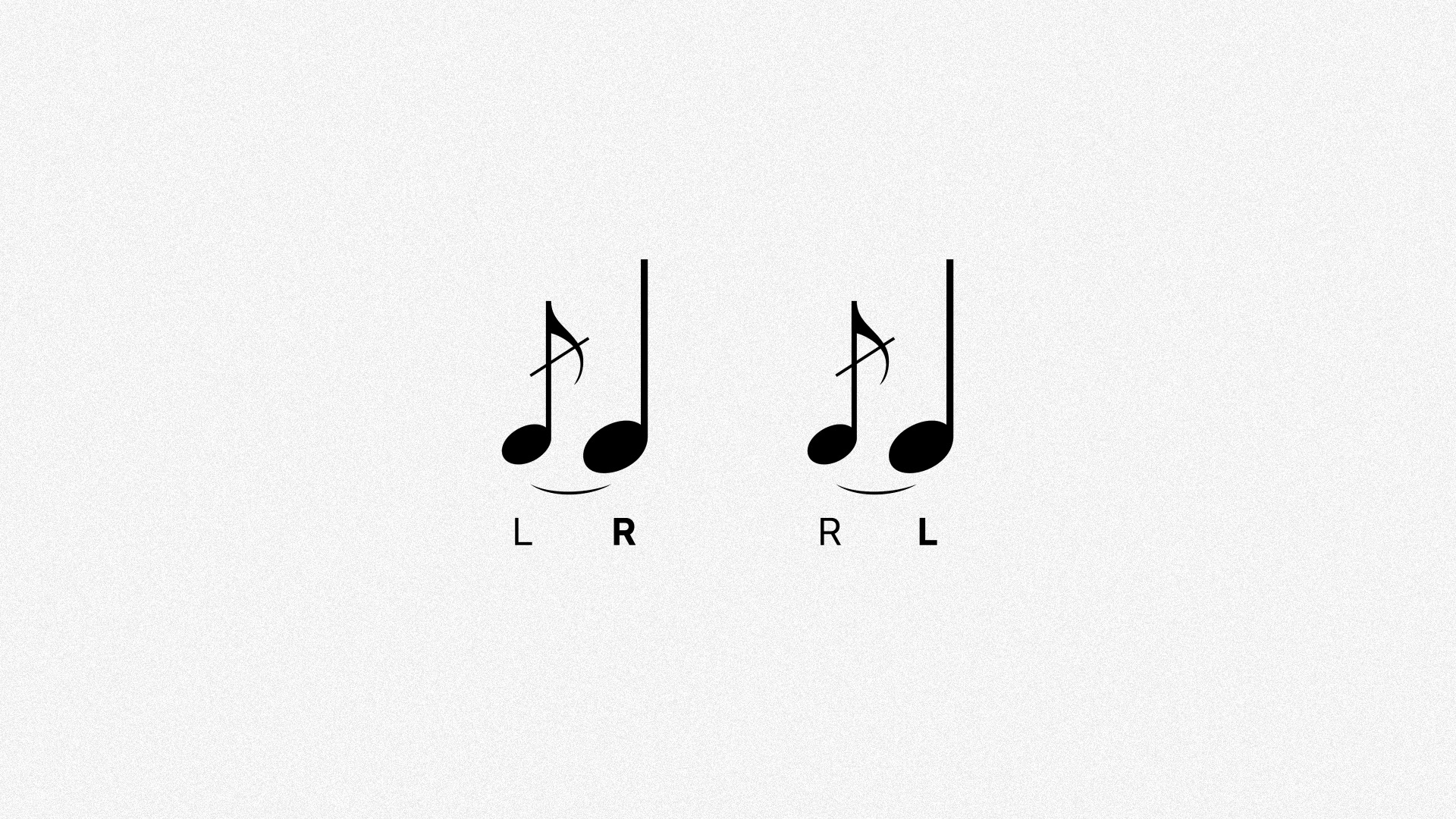
The basic flam is useful for adding emphasis and impact to the phrasing of a drum pattern.
They also help with building muscle memory and timing independence to start playing delayed strokes that are either ahead or behind the beat.
Flams represent an entire category of rudiment, so mastering the basic flam will open up doors to more flam-based rudiments.
How to use it around the kit:
5. The drag
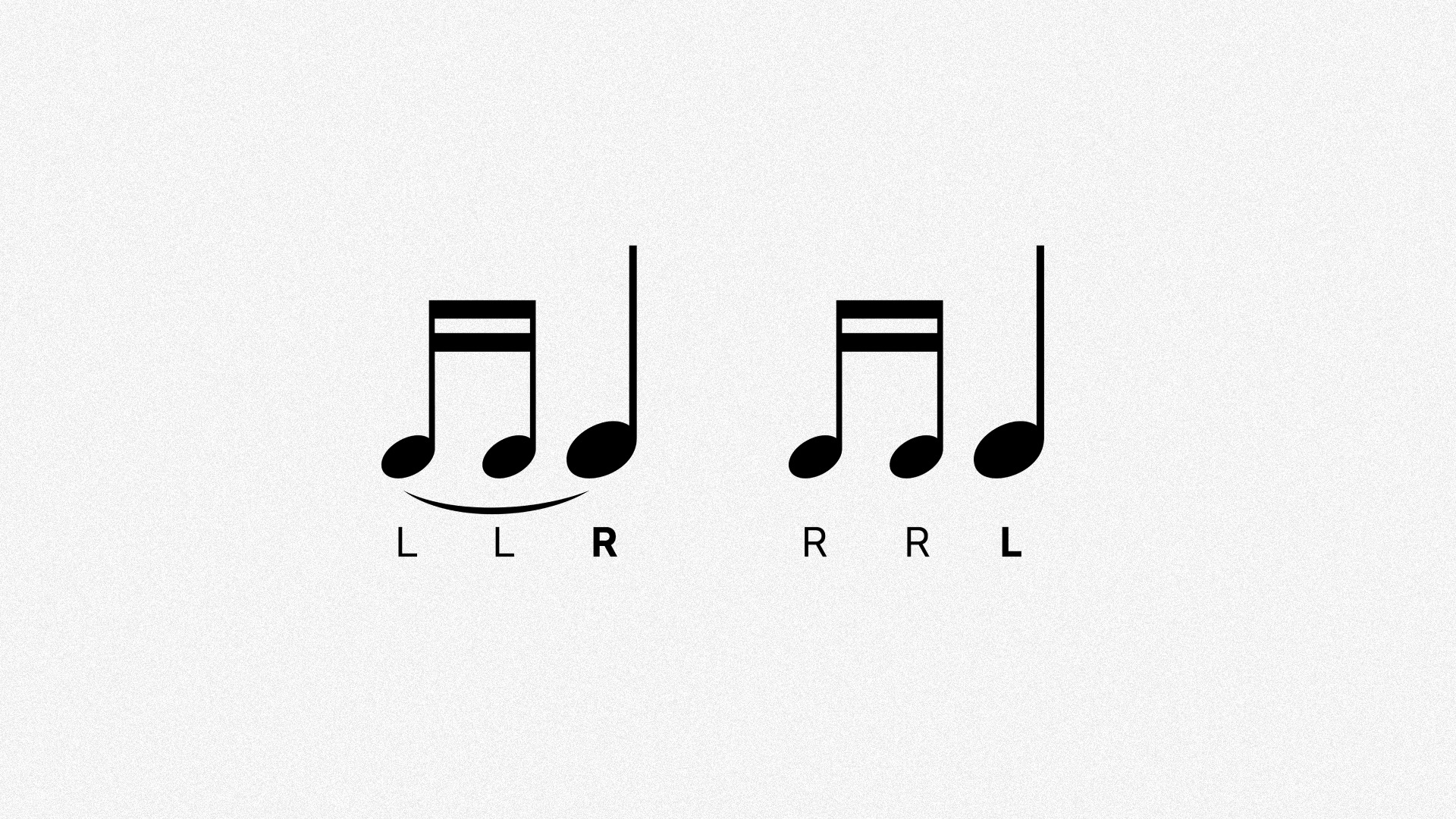
The basic drag is similar to the flam, except it uses a double-stroked ghost note before the downbeat.
This quick roll is useful for adding additional flare to any drum pattern and sounds great as an accent on the snare.
You definitely need to master double strokes and the flam before moving on to drags—but if you can pick up this rudiment, you’ll unlock an entire category of drag-based rudiments.
How to use it around the kit:
6. The five-stroke roll
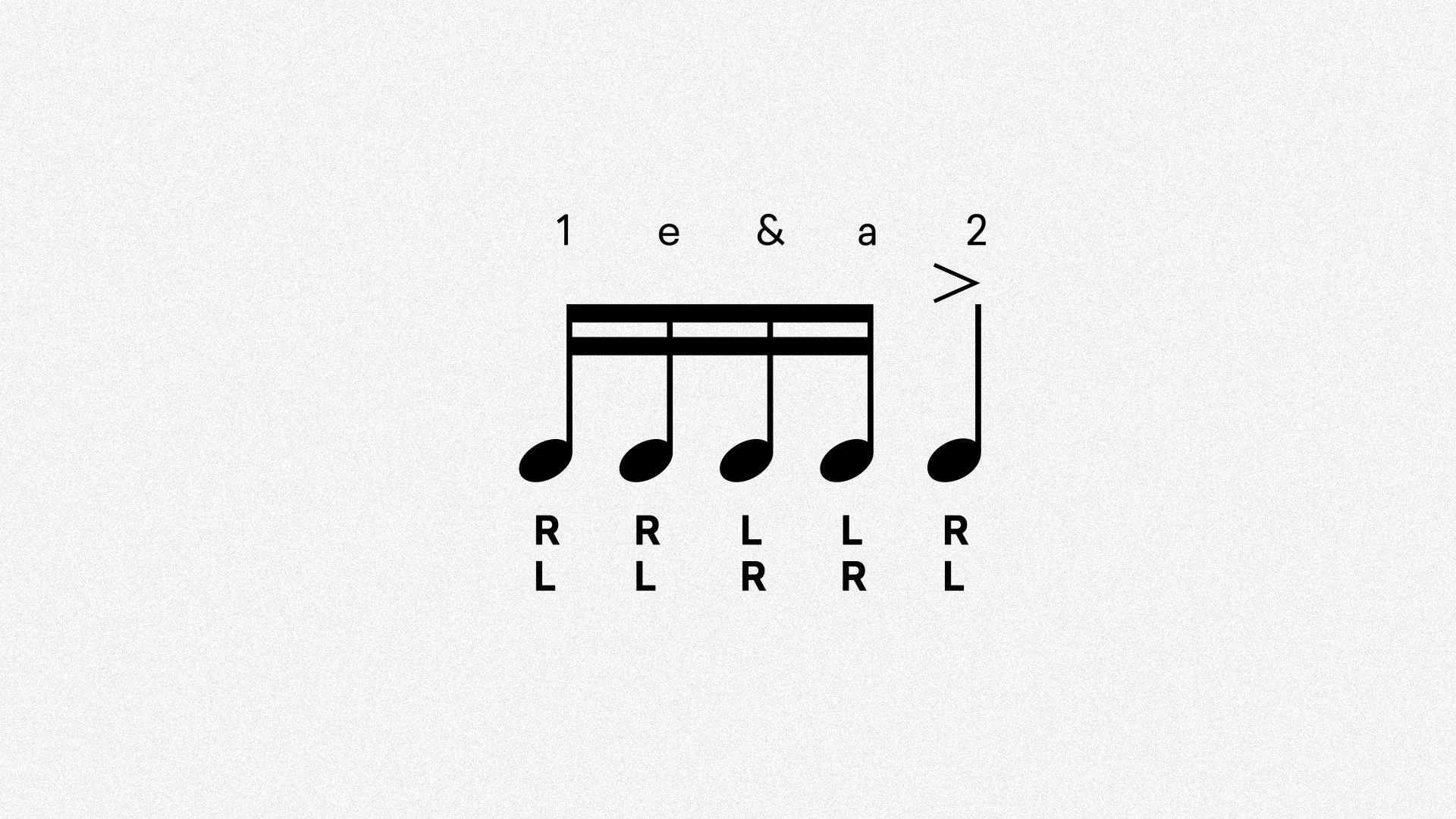
The five-stroke roll consists of five strokes played in rapid succession—it starts with a single stroke followed by two double.
It works well as a warm-up exercise but it’s also handy for use in drum fills that require mobility around the kit.
Once you master this, you’ll be able to move on to the longer rolls—the seven-stroke, nine-stroke, 13-stroke and beyond.
How to use it around the kit:
7. The para-diddle-diddle

The para-diddle-diddle is a really interesting rudiment, especially if you have your five-stroke rolls and paradiddles locked down.
While the para-diddle-diddle is best thought of as a paradiddle with an extra double stroke, it can also be thought of as a five-stroke roll with an extra single stroke.
All-in-all the para-diddle-diddle is a key tool that’ll open up many important rhythmic patterns on the drums.
How to use it around the kit:
Learn important drum fills from modern music.
8. The double paradiddle
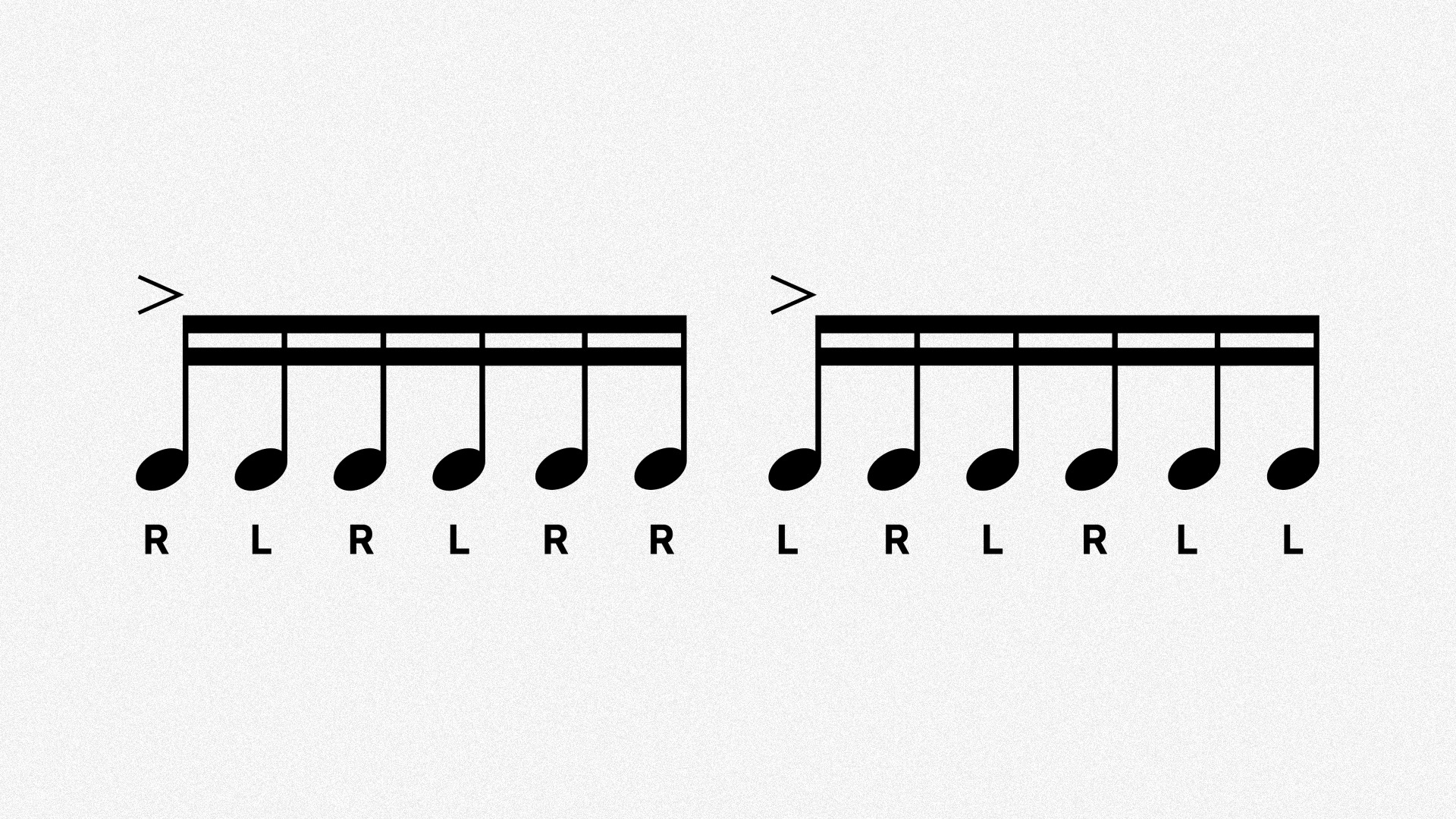
Similar to the para-diddle-diddle, the double paradiddle instead doubles the single strokes.
How to use it around the kit:
9. The Swiss Army triplet
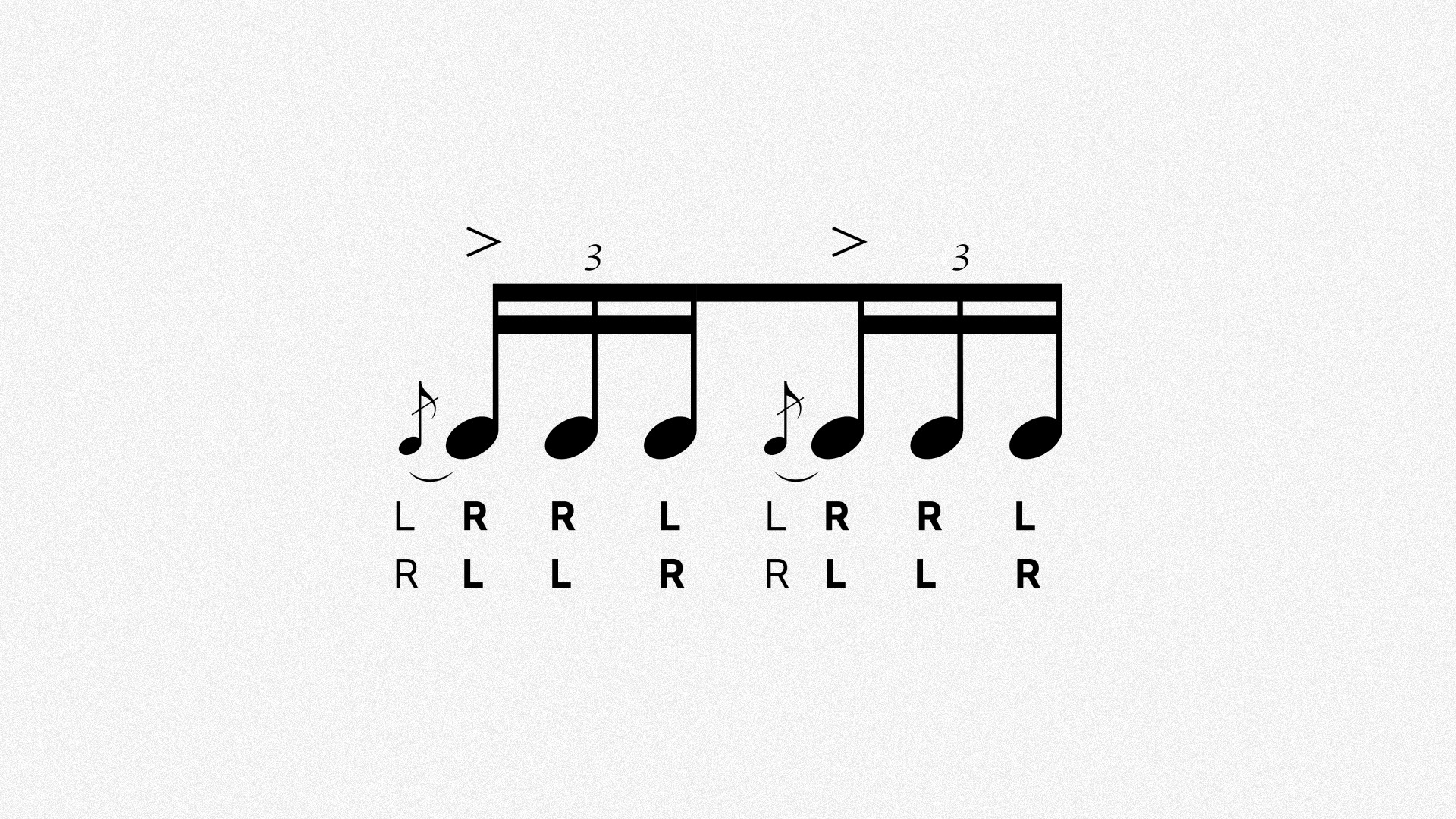
Harkening back to snare drumming’s militaristic origins, the Swiss Army triplet is maybe one of the most interesting rudiments around.
While it’s written using flams, when played fast it essentially works as an offset double-stroke roll, meaning the doubles are played inside of each other instead of in succession, giving it a triplet feel.
How to use it around the kit:
Danny Carey from the band Tool puts on a improvisation masterclass with the Swiss Army triplet.
10. The flamacue

This oddly named rudiment does not, in fact, grill meats on warm summer nights. Instead, the flamecue is a handy rudiment that uses a the “cue” pattern and adds some tasty flams.
This rudiment is useful for practicing accenting notes that are on the downbeat, since the accent of the flamacue falls on the second sixteenth-note of the pattern.
Mastering this rudiment requires you to learn how to play ghost note on the flam, followed by a large up stroke to then come down and properly play the accent of the third note.
How to use it around the kit:
11. The flam tap
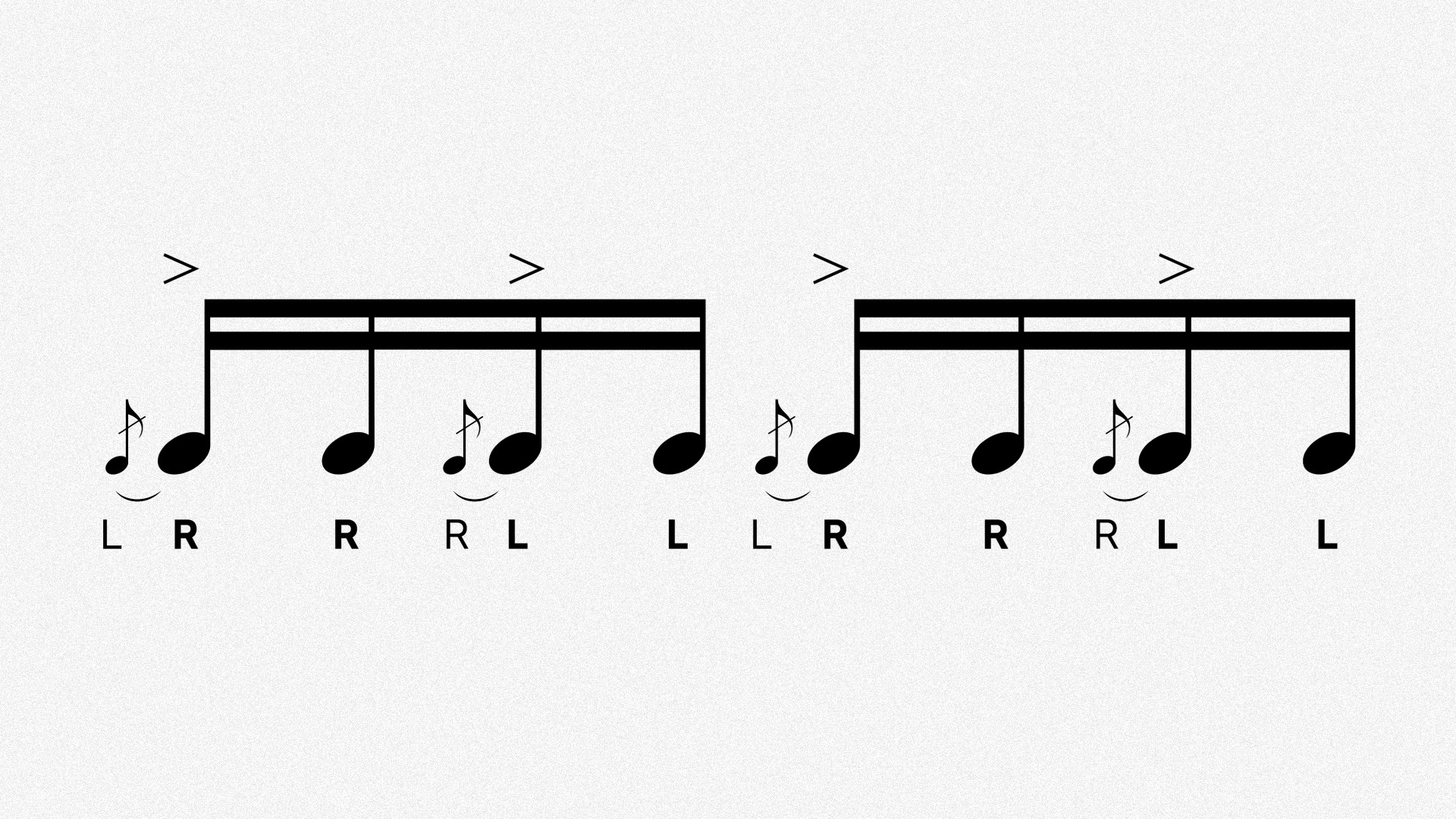
The flam tap is a great way to develop increased versatility and control over your flams.
Played fast and alternated between lead hands, this rudiment will also help you build up the muscle memory needed to play the triple stroke roll since the rudiment requires you to play three notes in rapid succession.
Remember that flams work best when the ghost note ahead of the main accent note is quiet as possible and played a split second before the main note.
How to use it around the kit:
12. The single ratamacue
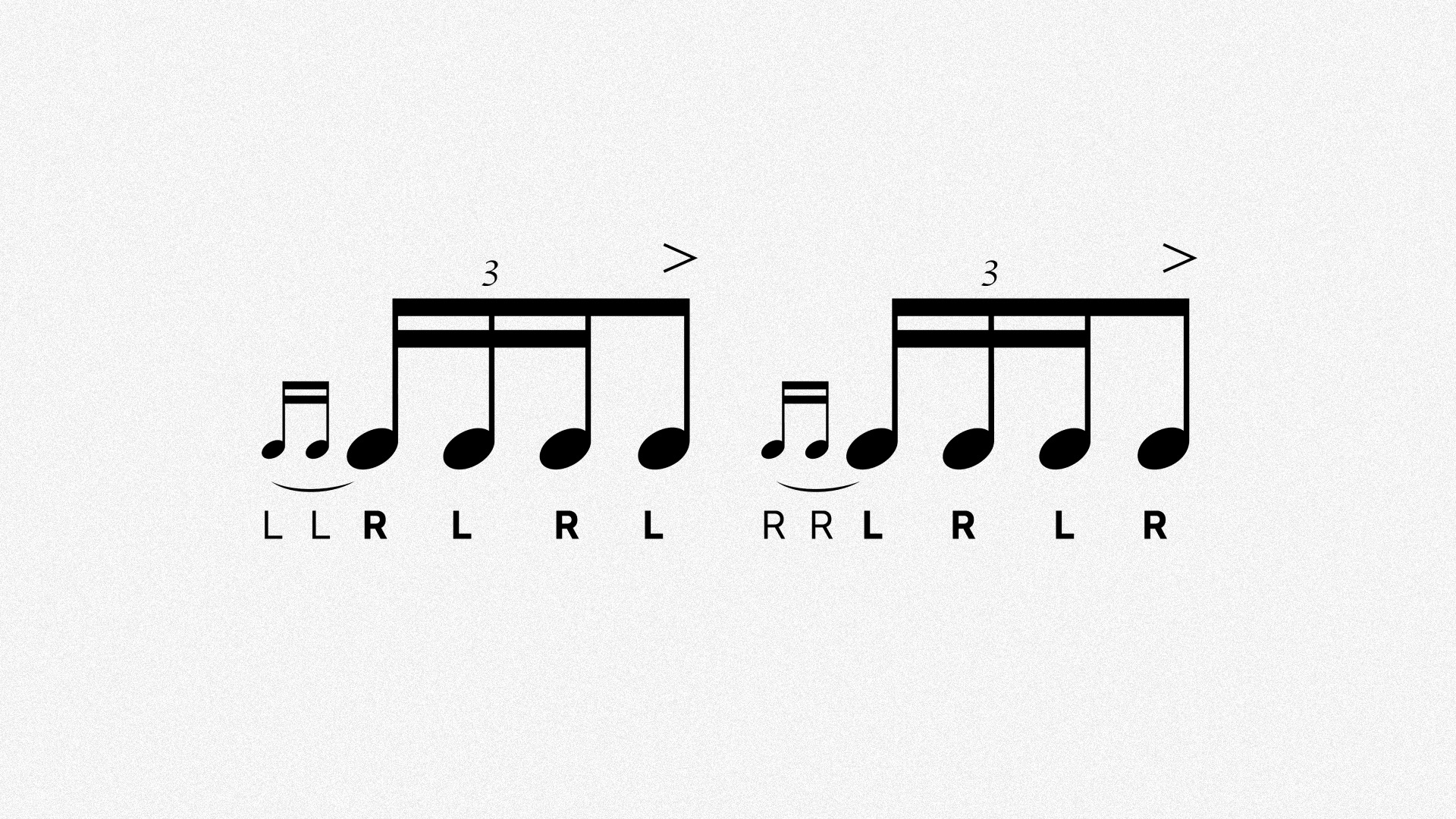
The single ratamacue is basically a snare drum lick that’s ready to go.
To master the ratamacue you need to have the drag rudiment down, which means a controlled double stroke going into the snare accent.
But, once you’ve mastered the single ratamacue, you can bang these out as a perfect starter or ender to any drum fill.
How to use it around the kit:
Rudimentary knowledge
While sitting down in front of a practice pad and learning basic rudiments isn’t necessarily as glamorous as playing a full drum kit, eating your vegetables and learning the basics will help you down the line.
So, while you may not be ready to digest all 40 of the “official” drum rudiments, starting off with these twelve will help you become a more creative drummer with a larger rhythmic vocabulary.
Have fun practicing these 12 rudiments!
Gear guides, tips, tutorials, inspiration and more—delivered weekly.
Keep up with the LANDR Blog.
